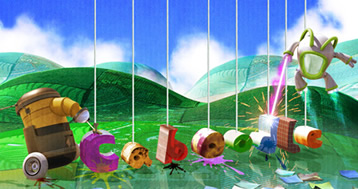Introduction
In 2008, Culture24 began work on a project called Caboodle. Two years in and lots of research, planning, writing, collecting, designing and technical building later, this feels like a good moment to take stock of the project and share its story so far.
Caboodle was conceived as a means for children and museums to share, show off, explore, tag and curate their collections on-line. It aims to inspire children to explore culture in an active way by making, doing and playing both on-line and off-line. The Web element enables exploration of collections in a fun, safe, child-friendly environment at http://www.caboodle.org.uk.
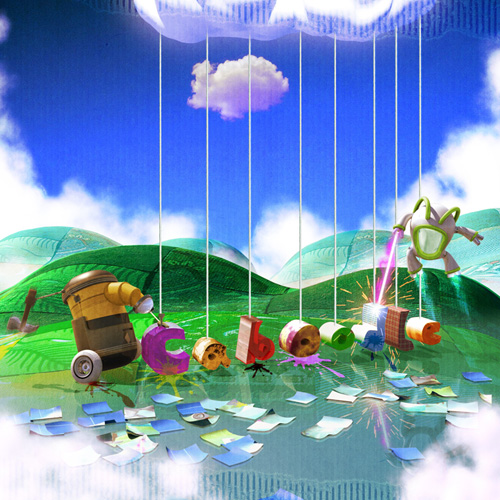
Fig 1: Caboodle Visual
Children and museums 'caboodle' alongside each other on the Web site - uploading photos of their collection items and curating them into tagged sets - creating an end product that mixes up historical objects with the latest trends in toys: contemporary collecting with its historical roots. In the real world we also provide adult practitioners with the inspiration and framework required to run their own 'Caboodle Clubs' for children in their care - a downloadable club kit with ideas for collections-based activities.
Caboodle inspires us - children and adults - to recognise that collecting means different things to different people and that there is value in sharing and learning about what others are passionate about. In very practical terms, Caboodle also aims to 'demystefy' museums for children, encouraging them to visit and enjoy museum collections and events in the real world. Lofty aims, but hopefully not unrealistic ones.
That’s the theory… is it working? Is Caboodle becoming all that we’d hoped in that first flush of enthusiasm? In this case study, written to accompany a demonstration session at Museums and the Web 2010, we’ll look at many aspects of the still-ongoing project - how it’s developing, what we’re learning along the way, and our future plans, breaking it down as follows:
- Publishers, staff and funders
- How the Web site works – design, build and safety
- Involving children – junior board and workshops
- Caboodle Clubs
- The numbers
- What do children caboodle?
- What do museums caboodle?
- Good failures and lessons learned
- Future plans
Publishers, Staff and Funders
Publishers
Culture24 is a publicly-funded, non-profit digital cultural publisher. We gather data from and about museums, galleries, archives, libraries and heritage sites and promote those venues and all that they do via a series of editorially-driven Web sites, led by our flagship site http://www.culture24.org.uk. Our vision, underlying all of our work, is that of a more unified cultural sector that is better able to embrace the virtual world, contribute to the creative and tourist economies, and advocate the role of culture in learning.

Fig 2: Culture24 Homepage
Culture24 has a succesful track record of publishing Web sites for children, having launched a children's portal called Show Me (http://www.show.me.uk ) back in 2002. Show Me gathers games and interactives created especially for children aged 4 to 11 by the museums sector into one child-friendly Web site, presents them in subject themes, and supports them with topical editorial and ideas for creative, cultural play. The site has been very successful despite no marketing budget, no film or tv tie-ins (key factors in children’s Web use), very simple technical infrastructure, and very low staffing levels (currently taking 1 day per week of an editor's time).
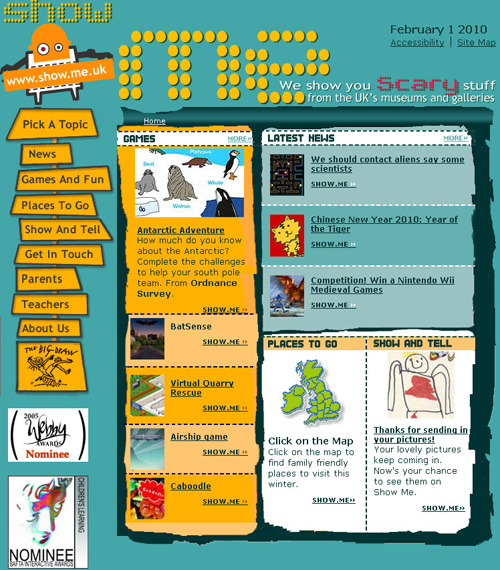
Fig 3: Show Me Homepage
Show Me has won several awards and been shortlisted for a Bafta and a Webby and drives significant traffic to a wide range of small, specialist museum sector Web sites. Usage is mainly within school hours. Google analytics, not renowned for its efficacy in measuring Web visits within schools, puts unique visitors to Show Me over the last 2.5 years at approx 3,000,000.
Staff
Developing Show Me built skills and experience in publishing for children, a network of contacts within museums, and a deep understanding of child-facing museum sector resources within the Culture24 team. It was this knowledge and skill set plus the opportunity we saw for further and more meaningful children's provision that we were keen to exploit via the Caboodle project.
The Caboodle project is managed by Anra Kennedy, Show Me's original editor and an ex-teacher. The Web site, both editorial content and moderation as well as the workshop programme, is run by another ex teacher, Mark Slawinski. Mark was recruited direct from teaching in the secondary system, so has very recent hands-on experience of working with groups of children. Even more important, he is an avid and extremely enthusiastic collector. This is key. Without understanding the particular mindset of a collector, and of children going through their collecting 'phase' as they try to make sense of the world around them, it would be very hard to run workshops and create content for Caboodle.
Funders
The Department for Children, Schools and Families (DCSF) funds Caboodle through the Children, Young People and Families (CYPF) Strategic Grants programme. Culture24 received support for a 3-year programme running from 2008 to 2011. The grant was front-loaded – ie, weighted to the beginning of the project to enable the technical build, staff appointment, content creation and pilot outreach work. The expectation was that we would in the course of the project find further sources of funding and/or weave Caboodle into our general offer in a self-sustaining way.
This is the original description of the project’s aims as described on our grant application form:
Tapping into the way children learn, play and communicate, Caboodle brings to life the world of collecting and curating, allowing kids to share their own collections (anything from comics to fossils).
This pioneering model of service delivery uses new technologies to create an on-line Caboodle headquarters. From here, children and parents at home as well as practitioners within childcare settings, community organisations or schools are provided with the inspiration, framework, resources and tools required to run a club via their existing network.
Caboodle exploits technology to create enriching, inclusive, fun experiences for children that facilitate engagement with culture and heritage.
The fact that the CYPF programme invested in Caboodle at all was unusual and a little unexpected. Being both ‘born digital’ and a cultural project put us in a minority of one amongst an impressive field of hundreds of third sector charities tackling issues as diverse as sexual health, parenting support, mental health, asylum seekers and access to badminton.
How the Web Site Works – Design, Characters and Functionality
Developers
Caboodle was built by the Brighton-based production company Mind Orchard, http://www.mindorchard.com, chosen for their track record in children’s design Web work with big commercial brands such as Nickelodeon and Lego. We were very keen to ensure that the Web site looked slick enough to compete with the commercial sector’s offerings (though under no illusion of ever matching their marketing budgets or promotional reach).
Functionality
The basic concept as set out in our functional specification was as follows.
The Caboodle site is essentially based on a copy of the basic sub set of functions from Flickr. Some differences in terminology are applied and there are some subtle differences in functionality, which are required for moderation, privacy, cost and performance reasons. Unlike Flickr, content uploaded to Caboodle is by default not publicly visible. It is intended that only a subset of total content is published for public view, and as part of the publication process users are required to select and organise their content into loosely categorised collections (Caboodles) which must pass moderation before successful publication.
The user selection, organisation and categorisation process is easy and fun, and offers further creative possibilities as users will need to create interesting and attractive displays from their collections to encourage visitors to the site to view and rate their Caboodles. The publication process allows Caboodle site moderators to check for inappropriate content before it becomes publicly viewable.
Safety
Moderation is key to Caboodle. We are aiming the Web site at young children and take that responsibility very seriously. All photographs are carefully moderated before being published, and once published, a caboodle cannot be edited. Anra and Mark are the only moderators at the moment, though we will outsource to a moderation service in the future if need be. Both have full CRB checks, are qualified teachers and are very aware of the UK's child protection and Internet safety policies and practice.
Photographs are potentially a risk, but thus far the only issues have been around copyright, when children have very obviously saved images from the Web and submitted them as their own. One child submitted a picture of her badge collection, including one image of a school badge complete with name and crest. An e-mail from Kit to the child explained again how she had to be careful not to share any personal information, even via a photograph.
The safety elements necessarily restrict functionality and freedom on the site. Our aim though is to provide enough scope for interaction and fun to outweigh the restrictions.
Using the site
Users - either children or museum professionals - register on the site, providing a username, e-mail address and date of birth and creating a password. To do this, they have to tick two boxes, agreeing that if they're under 12 they have permission from parents, teachers or carers to join and also that they have read and agree to abide by the Caboodle rules, whatever their age.
Once registered, they are sent an e-mail which contains a link to click on, activating their account. This determines that users are humans rather than machines.
Registered users at the time of writing in January 2010 have a range of options on the site. They can, in no particular order:
- personalise their profile page, choosing from a range of options to describe their moods, likes and dislikes
- upload photos to their personal, private photostream
- rename and add descriptions to their photos
- create a 'caboodle', choosing a name, tagging it, providing a representative image for the cover and writing a description (optional)
- post photos from their photostream into one of their Caboodles (photos can be used in multiple caboodles)
- submit a finished caboodle for moderation and publication on the public pages
- gather 'favourite points' and category badges via the caboodles they publish
- view, mark as favourite, and tag other caboodlers' published caboodles
- request to join another caboodler's club
- submit their published caboodles to clubs they are members of
- create a Caboodle Club, naming and describing it, becoming a 'club owner'
- once a club owner, control membership of their club by other caboodlers and also display published caboodles submitted by members to the club pages
- view other caboodlers' profile pages
- follow external Web links from museum profile pages to their own sites
- report any content that worries them
- read short editorial pieces profiling particular caboodles
- download hidden goodies – character 'makes' and sticker sheets
Users not logged in to the site can view all content, ie published caboodles, caboodler profile pages, editorial pieces, downloads and club pages. They can't favourite, tag, create or upload anything.
Current categories on the site are Arty, Nature, Treasures, Random, People and Toys.
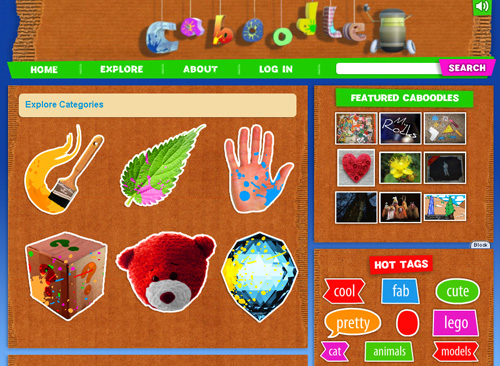
Fig 4: Caboodle categories
We are planning the next set of functionality. More on that in the 'Lessons learned' section later in the paper.
Character design
As mentioned, we were very keen to ensure the site looked slick and professional, competing as far as possible within a limited budget with the very high standard of design children are used to on high traffic, successful sites such as Moshi Monsters, http://www.moshimonsters.com and CBBC, http://www.bbc.co.ulk/cbbc.
After much discussion with Mind Orchard's designers, we decided to create two central characters to 'host' the site, guide children through and add a sense of fun. We opted for a pair of robots as we were very keen to relate the characters to our Show Me logo, a friendly robot. Robots make good cartoon characters for a number of reasons, the most obvious being that they sidestep the need to consider issues of age, gender, ethnicity and unintended identification with any particular person.
Caboodle's characters ended up being called Kit and Ace. Ace is our 'Airborne Collections Explorer' – an energetic, cheeky guide to the site, designed to seem irreverent and fun.

Fig 5: Caboodle character ‘Ace’
Kit is the 'Knowledge Information Technician' – more of a curator and caretaker type. Kit is sensible, making sure you keep to the rules, but in a kindly way.

Fig 6: Caboodle character ‘Kit’
The Web site's top banner contains several randomly-playing animations featuring Kit and Ace and drawing out their personality traits. The inclusion of some noisy animation (there is a sound off button), again limited by budget, was an element of the site design we felt was very important. Our experience with children over the years has taught us that fun Web sites without any movement or noise must be 'broken' in a child's eyes, however appealing the static designs may be.
As time and budgets allow, Kit and Ace will begin to caboodle their own collections and play a more direct role in site activity and navigation. Both characters were also designed, optimistically, with possible future uses in mind, from screensavers and viral ads to models, soft toys and TV cartoons.
Involving Children – Junior Boards and Workshops
Children’s involvement has been a crucial part of the Caboodle project from day one. We have gathered and listened to children's opinions on all aspects of the project, all the way along. So far in the project’s lifespan, we have implemented a number of ‘junior board’ and workshop sessions in different contexts, with different groups of children and with a variety of results. We're working with groups in three regions of England, with childred all aged between 5 and 13.,
Junior boards
As part of our initial planning and user testing for the Caboodle project, we staged a set of early 'junior board' or focus group sessions with a group of schoolchildren from the Brighton and Hove area. In these first sessions, we gave the children an overview of the project and asked them what they liked or disliked and what their creative ideas for the project’s growth would be.
We found that the children instinctively understood the fun, creative elements of Caboodle and were curious to know more. There was a sense that the children were stimulated by the idea of a site that would enable them to see museum content and be a curator. They also had lots of ideas for its growth; for example, there was an overwhelming desire to see toys on the site, and several children cited other Web resources that allowed chat as a good thing. We were able to take this junior board feedback and use it for our discussions in the early stages. This group chose the subject categories – their continual use of the word 'random' as a descriptive term being a good example of a category title we would never have come up with.
We gave children art materials and paper in this session and worked with them to create plans for a collection display ,and also sent them away with cameras to 'caboodle' at home for a week, following up with another session to look at the photos.
We found a marked difference in style and approach between the girls and boys; the girls preferred a wild, chaotic and colourful style and the boys a rather more organised, scientific and linear approach. We were initially concerned that we would never be able to create a site that catered to both boys and girls, but eventually came round to thinking, as we found out more about their collections and photographs, that the children would be creating these distinctions and variations themselves as they uploaded their personal content and as they found their own pathways around the Web site.
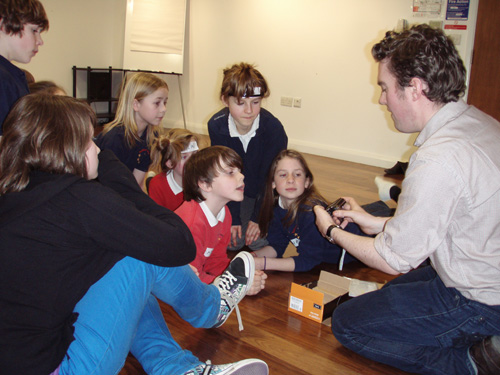
Fig 7: Caboodle Junior Board
As the Caboodle real-world workshops have developed over the course of the project, we have continued to use the feedback of various groups of children. In a regular programme of work at a primary school in West Sussex, the children have become evaluators, rigorously putting both activity ideas and the Web site to the test.
This process has been invaluable in stimulating our creative discussions and letting us explore ideas generated by our target audience.
Our next step is to develop a national junior board, on the Web, perhaps integrated into the Caboodle site itself, enabling us to include even more children and more fresh thinking. One idea we're considering at the moment is to reward young caboodlers' activity on the site by 'elevating' them to a position of responsibility within the site structure, giving them extra privileges and inviting them to make suggestions and test new ideas for us.
Workshops
Central to the 'real world' aspect of the Caboodle project are the Caboodle workshops which have taken place throughout 2009 in three English regions. The venues for these workshops have been schools, museums and youth centres. The workshops aim to give children aged 8 –13 a creative setting in which to explore the Caboodle Web site, find out about museum content, and be inspired to caboodle or begin their own collections. Workshops are also designed as testbeds for our Caboodle Clubs, ensuring the resources we develop are all tested and drawn from experience.

Fig 8: Caboodle Workshop
Several of the workshops have involved interaction with a museum’s collection, and all workshops have used other art forms, notably drama, to structure a playful, explorative session.
The largest Caboodle workshop project thus far was a scheme held at the Royal Armouries museum in the autumn of 2009, where several workshop sessions were held. We started with two introductory workshops to train teachers in using the site, and followed this with several classes visiting the museum to explore the collection, take photographs and learn about the arms and armour on show.
The day was led by the museum’s education team and curators. The workshop allowed pupils to explore the collections in several ways. Reproductions were used so they could dress up in armour and touch and feel the textures of clothing as they explored. There was a demonstration to the group by the curator, and Mark was on hand to discuss Caboodle, to encourage children to think about caboodling, and to answer questions.
The pupils loved these sessions and instinctively explored the collections and ‘Caboodled’ the collections in their role of 'expert' - which is how they were encouraged to view themselves throughout. The way they shared information with each other, using digital cameras and phones as a way to display what they were talking about, was particularly striking. The teacher sessions meant that the Caboodle philosophies of fun and exploration could be upheld.
Each workshop culminated in the kids walking round the exhibition rooms picking out their favourite objects to discuss and Caboodle. They loved doing this, and the whole experience was one we are keen to repeat as soon as possible.
A key point we took away from these workshops was how incredibly important it is to train teachers prior to a creative session so that they fully comprehend its non-curricular nature and are prepared to take the necessary risks. This workshop project was a huge success, and photo evidence has begun to filter through to the Caboodle site.
See the Royal Armouries Caboodle profile, plus two of their own caboodles at http://www.caboodle.org.uk/users/home/RoyalArmouries

Fig 9: Royal Armouries Caboodle
See a child's response to the workshop in Birdie's Ryecroft at the Armouries caboodle: http://www.caboodle.org.uk/explore/collection/e04cf913d2c4ab2abdce27a78fe5b053
and another, Lemondexx's Saving the Country caboodle at: http://www.caboodle.org.uk/explore/collection/8156dc0bb056e4ca898949934a7baf3b
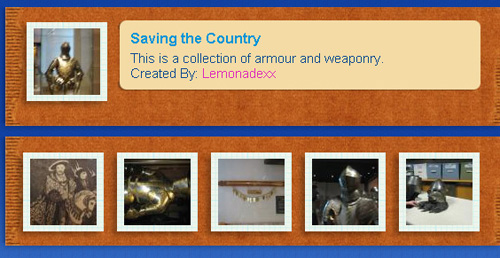
Fig 10: Child’s (Lemondexx) Caboodle
We have been running an ongoing series of workshops in several schools in the West Sussex area and have a sixth-form student volunteer running a workshop group on our behalf in West Yorkshire. In the two schools that we visit, we have the full support of the senior management, which means we can be creative and experimental. We began both sessions as ICT-based workshops, meeting once a week to caboodle. This generated content for the site - several uploaded more than one caboodle. Others added the collections to their favourites, and an overwhelming majority set up clubs, an aspect of the site we're keen to develop.
The biggest challenge in setting up the ICT-based workshops was adapting to the schools' technical provision and services. Often, sensitive filters on a school’s server would not accept Caboodle (a common problem with external Web sites, however squeaky clean they may be). Another issue was that the site requires Internet Explorer 7 or 8, but many schools are still using IE6 and don't have the control to upgrade without approval from local authority IT services or a technician. This meant that there was a delay in starting the workshop sessions and an interim period of tweaking was required.
We also noticed another ‘problem’ – the novelty factor, which isn't always positive. In the school setting, children were very keen to ask questions and often would seemingly pretend they didn’t understand the site to generate a discussion before they had taken the time to independently investigate. This differed greatly from off-site workshops, such as the Royal Armouries project where the children would pursue what they were doing independently and without fuss.
Another recent challenge in schools has been our work with one particular school, which initially started in an ICT-suite. The teacher requested, once the workshops had begun, that they be conducted without the use of computers, due to problems with the school server, timetabling and limited digital resources. The challenge there was to do creative work with pupils without use of Caboodle, at the same time maintaining their awareness of the Web site. We did this through drama and arts activities linked to the museum collections on the site and by in-role exercises as a curator, combined with the assignment of a task (we call them ‘missions’) where the children go home and take some photos. This has worked well and the sessions serve to stimulate caboodling that the kids do at home.
Another challenging workshop series took place in an economically deprived area of Brighton as an extra-curricular project. Here, children had little or no home access to digital resources. The after-school project where we worked provided the kids with a space, refreshments, games, activities and one computer.
In total contrast to the formal school sessions, this was a much looser hour with the kids freely walking around from pool table to canteen, then outside for a water fight! At first we didn’t think it was going to work. We abandoned any teacher-style formal approach and just hung out with the kids, chatting to them. Slowly we filtered in a discussion about interesting objects, leading it to collections and finally, museum content. Eventually a core group of four sat around the computer looking at Caboodle, and they loved it! This group did sign up, and although we didn’t receive a collection from them (not even sure if they own cameras, a barrier to particpation if not), the database shows that they made several visits to explore the site’s content.
Caboodle workshops in a small, local and very 'traditional' museum, Storrington Museum in West Sussex, proved very different again. Here, we took a small group of kids in to view the collection, take pictures, and give their opinions for a Caboodle.
This was a real success, with the mixed group of children all displaying enthusiasm for the relatively small museum’s collections. All went away with a strong idea of what a curator does, how important collections are, and how they could apply this to their own world. As a development of this work, we are in the process of setting up a permanent Caboodle Club made up of kids from the local school at this museum. We will lead the initial sessions, which will then be taken over by two teacher volunteers. The Caboodle site will of course be the digital hub for this.
Two chocolate-themed caboodles from these sessions can be viewed here, interestingly, registered on the site under Storrington Museum's profile, rather than the individual child's, an example of caboodling by children on behalf of an institution and through their eyes: http://www.caboodle.org.uk/explore/collection/ade0513b723ec73b26fc1c6fae68658d
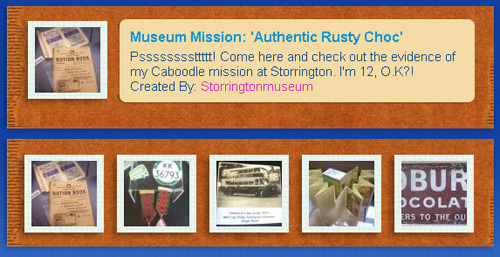
Fig 11: Example of a child caboodleing under the Storrington Museum profile
http://www.caboodle.org.uk/explore/collection/34661f6d9c29b012c3af995c72b0d673

Fig 12: Example of a child caboodleing under the Storrington Museum profile
Through the pilot workshops detailed here we confirmed what we suspected all along - that children enjoy exploring museum content, like to learn about the skills and thinking of curators, and want to show off their collections on-line.
Many kids are collectors but often do not often the value of preserving their collections, and are very keen when given the opportunity to do so. They are also inspired by an exploration of museum collections in a friendly package on-line, particularly in the guided framework of a workshop. Kids also enjoy creative workshop activities linked to our themes, and these are a valuable mechanism to thread in museum concepts, collection awareness, and the skills of the curator.
Caboodle Clubs
Vision
We want the Caboodle Clubs to give kids across the UK access to museum content on-line, creative ideas for their own collections, and a chance to collaborate with other children and their families. We want to inspire a wave of collecting across the country and encourage a new generation of curators to explore their family heritage and culture through the collection of objects. We want kids to be able to explore museum concepts through fun and play, and we want to bridge the gap between a child’s world and that of their local museum.
Resources
The Caboodle project has generated a set of downloadable 'Caboodle Club Kits'. The kits are designed to empower and stimulate teachers, after-school club play workers, or others working with groups of children to set up clubs, either following structured six-week plans or dipping in and out, reworking, adapting and embellishing our plans. They're designed so that parents, teachers, youth leaders or museum staff can run a Caboodle Club wherever they are, and whatever they have to hand.
The resources are themed in batches, each highlighting types or elements of museum collections. They also closely relate to the range of material we are hoping to elicit on the Web site from both children and museums.
As well as getting a concrete link to a museum and connected creative ideas, kids may be creating their own fashion show, rock band or treasure hunt, as with this extract:
Week 3: Designing Costumes
- Playing with ideas for a theme/materials for your cool outfits
- Looking at your collages and drawings so far, deciding what works
- Making a design sheet showing your theme and costume ideas
- Curator’s Tip: What will amaze your audience?
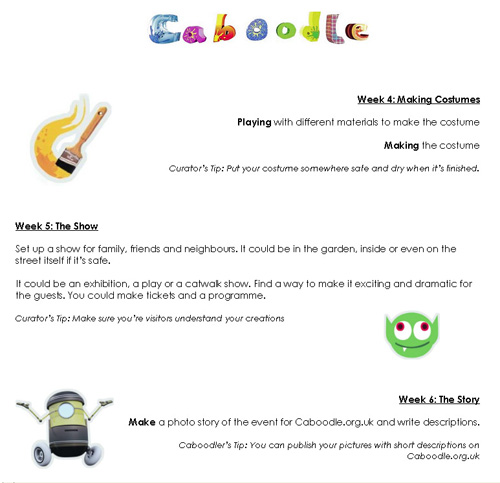
Fig 13: Club Kit Resource “Wear and Tear”
In each instance the context will be a bona fide collection from one of the nation’s museums; for example, the fashion show (of which the above extract is the build-up) is framed by info about the V&A’s clothing exhibits: http://www.vam.ac.uk/collections/fashion/todoon-line/index.html andhttp://www.vam.ac.uk/collections/fashion/object_stories/index.html
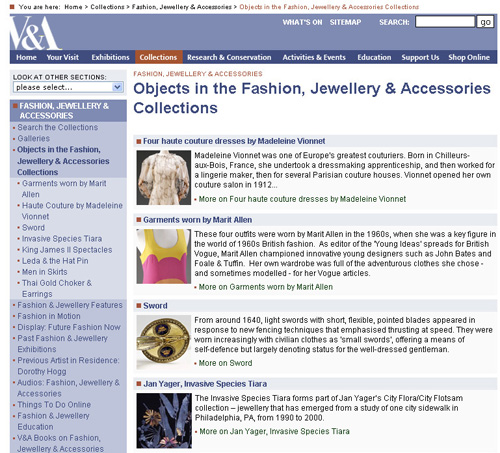
Fig 14: V&A Objects in the Fashion Jewelery & Accessories Collections
We hope that these extra-curricular and culturally pertinent resources will provide children with a creative and sustainable introduction to museum content with strong educational, social and familial benefits.
Children's voices are input into the formation of these resources as well as the Web content. In the Royal Armouries workshops, we recorded the evaluations of children as they actively explored collection objects, noting which ones appealed to them most, what they chose to photograph, and how they captured the item. We also asked them to comment on the event: their likes, dislikes and suggestions. This and other workshops have informed our decision making process as we approach other museums to plan real-world museum-based Caboodle events and resources.
We will be making the Club resources available on the Web site over the next few weeks and then promoting them to our existing audiences of teachers and museums to encourage use.
The Numbers
Caboodle has been live as a Web site since June 2009, 7 months at the time of writing. Workshops have been running for 9 months. We are still officially in pilot phase and have not yet begun to promote the site. The figures are nonetheless interesting.
Here's a taster of Google analytics stats recorded between June 1st 2009 and January 29th 2010:
- Unique visitors 4,067
- Visits 6,628
- Page views 79,944
- Average page views 12.11
- Time on site 6.54 minutes
- Bounce rate 22.44%
- New visitors 61.24 %
- Returning visitors 38.76
- Caboodle database stats:
- Total registered users 478 - activated 318, not activated 190
- Total 'clubs' on Web site (virtual clubs) 171
- Total tags 633
- Total photos uploaded 1,589
- Total published caboodles 112
- Total unpublished caboodles 106
It is too early to analyse these statistics in any depth - site usage in workshops has the potential to skew numbers, as does the difficulty in recording school usage. However, the first signs are very encouraging. Dwell time on the site is high, as is the average number of pages per visit. Whether that's due to a fantastically sticky site or children not finding what they're looking for is hard to determine definitively at the moment.
A few more months down the line, after more technical fixes and a concerted promotional campaign, we'll be able do some really meaningful stats analysis. In the meantime we're looking closely at the way children use the site in workshops and at what they're posting and doing.
What Do Children Caboodle?
Caboodles:
Children using Caboodle immediately began to go beyond the straightforward definition of a collection. There are collections in the traditional sense:
rubbers as seen in Emmylily272's Rubbers(thousands) caboodle: http://www.caboodle.org.uk/explore/collection/721f9d2285eae14ecb0f414ef8f3dabc
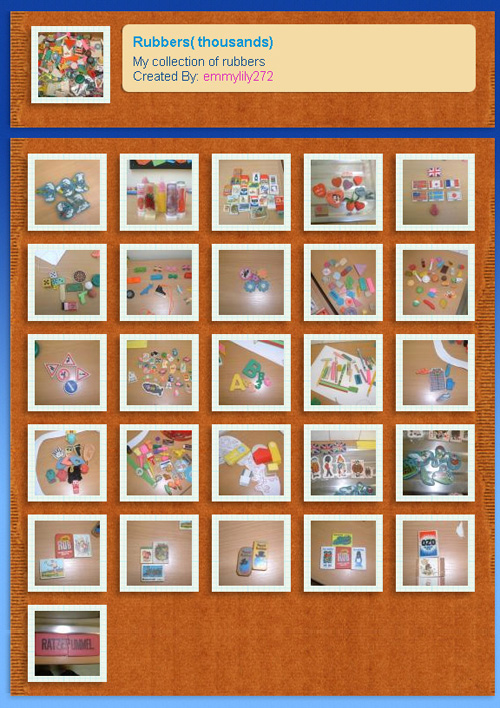
Fig 15: Child’s (Emmylily272) Caboodle of ‘rubbers’
favourite books as in Legoman's Alex Rider Collection caboodle: http://www.caboodle.org.uk/explore/collection/4a4d34dbd039f6531298ddf37af1bd3f
transformer toys as seen in Motorbikeninja's Transformer Collection caboodle: http://www.caboodle.org.uk/explore/collection/8b402471a434c6436c8040974dd5ffd8
Those collections are wonderful. The ones that go beyond the initial concept are the really exciting ones for the Caboodle team though. Children have used Caboodles to tell stories, created ad hoc collections from the world around them, shared their hobbies and been very open and enthusiastic in their approach. Here are some of our favourites -
Playmobil Pandemonium by Mattiemoucow explains what's going on in a series of playmobil tableaux: http://www.caboodle.org.uk/explore/collection/d62b005535cf0d5a6dbf26cc2760b993
Cazo678's Great Bows caboodle comes with safety instructions as a boy not only shows off his archery set but also shows us how to use it: http://www.caboodle.org.uk/explore/collection/619c48254a6374edef20da233498afe9

Fig 16: Child’s (Cazo678) Caboodle of ‘Bows’
An attempt at cataloguing his grandfather's second world war collection by carbootsale (apposite username?), with objects photographed in a domestic setting, one with a handwritten label, is touching and gets to the heart of the project: http://www.caboodle.org.uk/explore/collection/468982f0ee25eb57554e70bde3f914d8
Something we didn't anticipate was children creating pictures on digital art programmes and with others with more traditional media, especially for Caboodle.
Wynrose's Yellowstone National Park caboodle is so accomplished it could be the work of a professional illustrator (could be, we can't tell). http://www.caboodle.org.uk/explore/collection/5869abd68ae738372a817218d6352f32
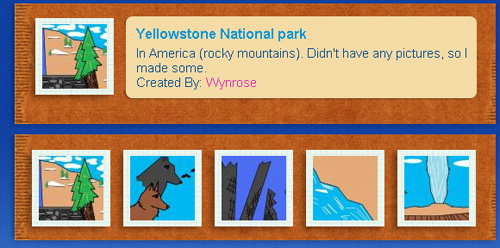
Fig 17: Child’s (Whyrose) Caboodle about Yellowstone National Park
KatyLikesApples has a great attitude – 'I was bored... I drew some stuff... I put it on caboodle!' at: http://www.caboodle.org.uk/explore/collection/8aa41f851d01540a47061c26089eacac
Communicating:
Chat isn't allowed on Caboodle: the project simply doesn't have the capacity to moderate to ensure children are safe. All published caboodles are pre-moderated, text descriptions and all, and profile personalisations are all fixed choice drop-downs - restrictive but necessary without a larger team. Children have of course been trying to circumvent this, using tags and club names to send messages to each other.
Tags are post-moderated – a risk, but thus far no problem. We spent a lot of time developing an extensive list of swear words to ensure our filter would be as strong as possible. Every variation of every letter and spelling that we could think of was included, from s3cs and p00 to much more 'hard core' phrases. After initial teething troubles around the stemming of words when 'album' and 'arsenal' were rejected, much to our young testers' frustration, we seem to have the balance right.
Messages posing as tags like 'soz for getting it off the page,' 'show us more,' 'i heart boys', 'kool from ethan,' 'yat its jatie' and the classic 'yat its katiellapellaquellanellamellhellagell' demonstrate how enterprising some children are.
What Do Museums Caboodle?
Encouraging museums to caboodle has been a steep learning curve. We decided to begin by approaching a small set of those we already had connections with or that fitted subject matter we were interested in pursuing.
The principle is that museums and children have equal status on the Web site. The only visible difference is that museums can add free text and links to their profile pages in order to give their collections a context and provide a level of go-further interest.
English Heritage's Young People of the Past caboodle has appeal in its use of children in images: http://www.caboodle.org.uk/explore/collection/05e2dc69702117212fbad1cc63b6751c
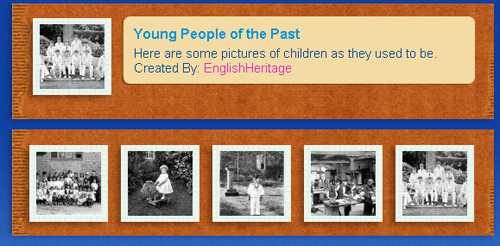
Fig 18: English Heritage Caboodle ‘Young People of the Past’
The afore-mentioned Royal Armouries account includes these curious objects: http://www.caboodle.org.uk/explore/collection/849ea0ae16c184cf4b98c825795af1b4
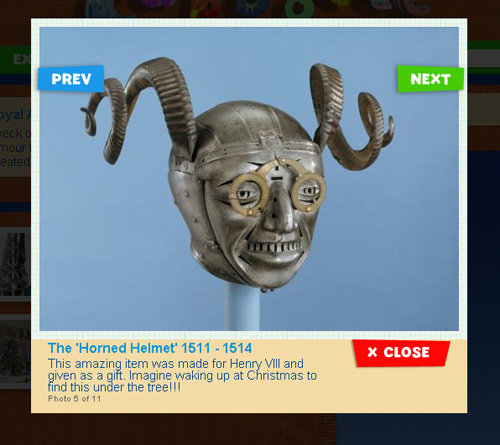
Fig 19: Royal Armouries ‘Horned Helmet’
By working with a small group, we've learned the pitfalls. Museum education officers are worse than children for forgetting passwords and can also tend towards the wordy and the worthy in their entries. Giving a taster of a collection description and choosing an item or image with appeal to a young audience doesn't always come naturally. They naturally have very little time. However, when it works, as with many of the museum caboodles on the site at the moment, it works well, and many institutions have been extremely supportive.
In the next section we'll outline ways in which we're planning to make the museums' experience of participating in the site easier, lowering the entry barrier and improving the depth of their caboodles.
'Good Failures' and Lessons Learned
Caboodle is still officially in the pilot phase. Comments after the extensive involvement of children in the junior board and workshop sessions, combined feedback from teachers, parents and museum staff, along with our own insights and ideas, mean there's still lots to get right and lots of potential. Crucially, we have held back a portion of the technical budget to carry out a further tranche of development before beginning a digital marketing drive.
Over the course of the pilot we have found some elements of the Web site that simply don't work well enough yet, that are mistakes, but then there are also developments that will move the Web site forward in terms of the original scope . We'll detail these in this section of the case study.
Clarity and ease of use:
The Web site isn't easy enough to use yet. It's not clear to a user exactly how much there is for them to do: they have to drill too far down into the site to find all of the functions. This is our priority for the next set of developments which will take place in February 2010. Changes will include:
- notifications – using more of them to keep user profile pages moving, let them know exactly what's going on, who wants to join their club, who favourited their caboodles, messages from Kit, and so on
- pathways – give children progress 'scores' or 'bars' on their profile pages as another way to encourage use of all the functions
- improved tag clouds – the current tag clouds have the right idea but are too clunky and slow-moving and they don't display enough tags; they need to look more like a cloud a child would find elsewhere
- search results – change order of return so caboodles come up at the top of the page
- descriptions – move photo descriptions above the image in the image viewer, rather than below fold as they are at the moment
- copyright information – make visible in image viewers.
Stickiness
Children enjoy using the site, and will enjoy it even more when the ease of use is increased, but we would like to go further still by building in more incentives to stay:
- rating – increase the capacity to rate each other's caboodles, building a sense of competition and incentive
- rewards – through activity and ratings give children hierarchical 'status' levels, rewarding their time and activity on the Web site; make these visible (ie 'today's top caboodlers are...' lists etc)
- displays - put more caboodles on display, making more of the content in the site
- clubs – children love these, but they're hidden: bring them to the surface of the site with their own landing page and improved usability
Future Plans
Once the technical improvements outlined above are finished, there are three key areas of development we are keen to pursue.
Reaching beyond the Web site
As soon as we can we'll build in RSS and some ratings widgets, enabling children and museums to show off their caboodles in Web environments beyond Caboodle. This could work especially well with ratings if users were able to send out their latest Caboodle and invite friends and family to rate them.
Making more of museum collections
We'd like to establish a 'pool' of museum images for children to play with within Caboodle. We'd ask museums to donate, hopefully via an API to minimise their effort, collection images cleared for use by children, to this central pool. Images would all be accompanied by the relevant identifiers and a short, child-friendly description. Children (and museums) registered within Caboodle would be able to save copies of the images into their Caboodle photostreams, tag them, describe them, and make their own Caboodles with them.
We envisage this 'pool' also being made available on our other children's Web site, Show Me, to support homework help. If the pool is kept to a manageable size and thoroughly tagged, by both museum professionals and children, this could be an invaluable way of opening up collections and supporting informal learning for this age group.
Developing the Club network
The starter set of resources is finished and we're almost ready to begin promoting them to after-school club leaders, teachers running lunchtime clubs, and education officers running clubs in museums. We'll be doing more off-line work to build networks of Club leaders and support their work. We'll also investigate models for sustainability, exploring a 'freemium' model of service delivery around the on-line and off-line work.
